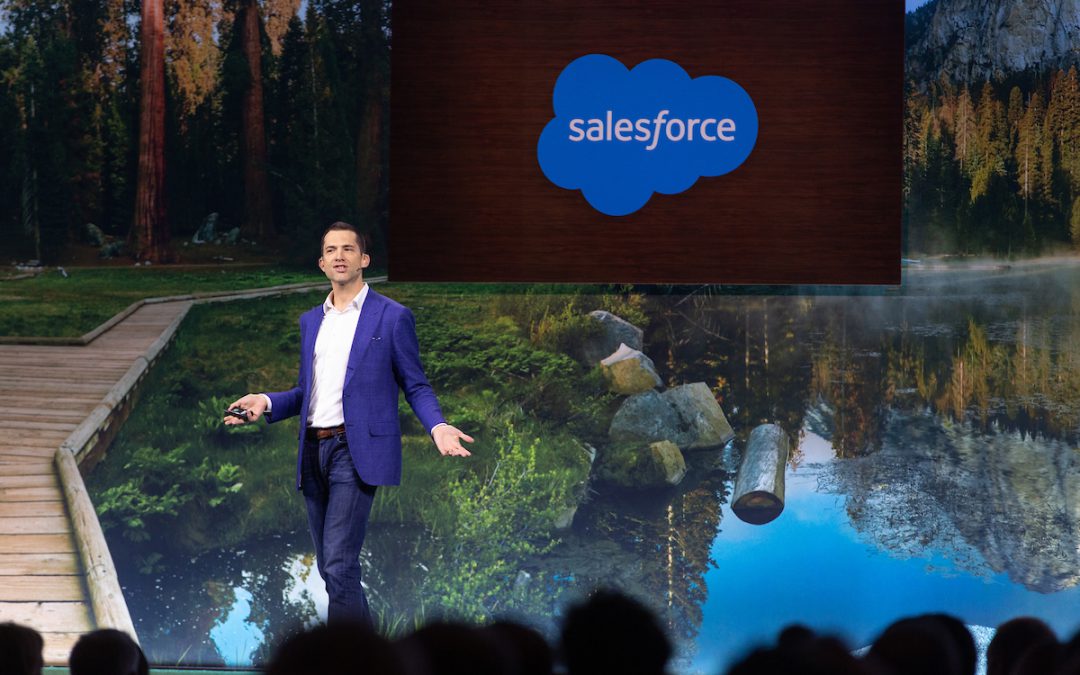Salesforce has hit the mark again! Dreamforce 2019 at the Moscone Centre in San Francisco was an absolutely fantastic event for all of those in attendance. From renowned keynote speakers, such as Barack Obama, David Beckham, Megan Rapinoe, Emilia Clarke, Stephen Curry, and Eddie Vedder, it was a truly awe-inspiring and momentous experience for everyone who came to listen to these trailblazers share their stories, expertise, and insights. And hearing Beck and Fleetwood Mac perform was a rare, once in a lifetime opportunity.
Spanning several city blocks, Dreamforce housed more than 170,000 people for 4 days of inspiration, interaction, education, and excitement in San Francisco.
Let’s get into some of the key takeaways from the event.
The Holy Grail of CRM: Customer 360 Truth
Having a single view of customer data has been a major focus area for many CX (Customer Experience) leaders over the past several decades. It happens to be one of the fundamental problems that CRM was designed to solve for CX leaders as a system of record.
However, organisations today need more than just customer data to manage customer experiences seamlessly. For instance, a commerce organisation must have real-time and accurate visibility into systems used to manage product delivery to provide their customers with accurate updates when the client inquires about order delivery status via a mobile application or website. To address this, Salesforce has launched Customer360 Truth, which is designed to bring data across different systems together within the company’s Customer360 platform.
The term “single source of truth” refers to fully integrating all enterprise systems, including CRM, ERP, marketing automation, order management, commerce, supply chain, contact center, accounting, etc. By establishing a unified and consistent version of truth, organisations can manage their activities more accurately. From a CX standpoint, it enables the delivery of personalised and consistent experiences by using data from across all systems within an organisation.
How Tableau Complements Salesforce
In October 2019, Salesforce acquired Tableau, a leading BI (Business Intelligence) software platform. This acquisition enriches Customer360 Analytics capabilities by enabling enterprise-wide analytics on top of the current Einstein Analytics for CRM and Datorama acquisition capabilities for marketing analytics.
Integrating Voice Into Salesforce Service Cloud
While Service Cloud has reliably provided Salesforce users with the ability to interact with customers through various digital channels such as messaging, social media, online communities, and chat, it didn’t have telephony capabilities included. Salesforce announced that it has partnered with Amazon Connect as a strategic provider of contact center services for Service Cloud Voice, which is a new product that brings together phone, digital channels, and CRM data into one unified console to provide enhanced customer service.
The partnership includes utilising Amazon Connect’s speech analytics capabilities, which will provide contact centers with sentiment analysis, speech to text transcription, and translation to preferred languages into Service Cloud Voice. At that point, Einstein analytics steps in and gives agents contextual guidance, such as relevant knowledge base articles, next-best action guidance, cross-selling or up-selling opportunities, etc.
Coaching For Sales Calls
While speech analytics is traditionally viewed as a technology limited to the contact center industry, ambitious sales leaders are finding ways to incorporate it in their operations. They’re using speech analytics to monitor and analyse phone conversations between sales reps and buyers, and provide salespeople with real-time guidance via the employee desktop on how to best manage the conversation. This helps sales teams with automated guidance to maximise each rep’s ability to attain their quota, shrink sales cycles, and improve overall engagement levels.
Specifically, call coaching helps unearth what works for top-performing salespeople and uses the insights to guide other team members in real-time with similar best practices.
Einstein for Customer360 Commerce
Salesforce now enables commerce organisations to use Einstein analytics capabilities in designing and updating commerce sites to ensure the delivery of highly personalised experiences across all shoppers. It accomplishes this by utilising Einstein’s AI capabilities to observe the unique preferences of each buyer by analysing data within the Customer360 platform, and then offering content which is relevant and has a high probability of converting new website visitors into customers.
The platform also helps provide commerce staff with relevant site design recommendations, enabling them to make faster decisions about how to update the commerce site. This improves overall employee productivity and agility in responding to evolving shopper needs.
Mobile Publisher Capabilities
Salesforce also presented a demo of its new mobile publisher capability. It was interesting to see how users can quickly and easily build and update mobile applications by clicking on various options within the platform (a truly low-code option), as opposed to coding an application by hand. Such agility is of paramount importance, as commerce and marketing teams can now quickly update mobile apps with the most relevant features to align with their customer’s needs at the time.
The Wrap-up
As with Dreamforce events in the previous years, this year’s conference was rich in announcements and sneak previews. It’s inspiring to see the Salesforce’s continued dedication to social issues and community involvement. Technology isn’t simply about enhancing your organisation’s bottom line or cutting costs. Ultimately, it’s people who use technology to achieve these outcomes, and enriching the lives of current and potential users translates into further amplifying its impact.

